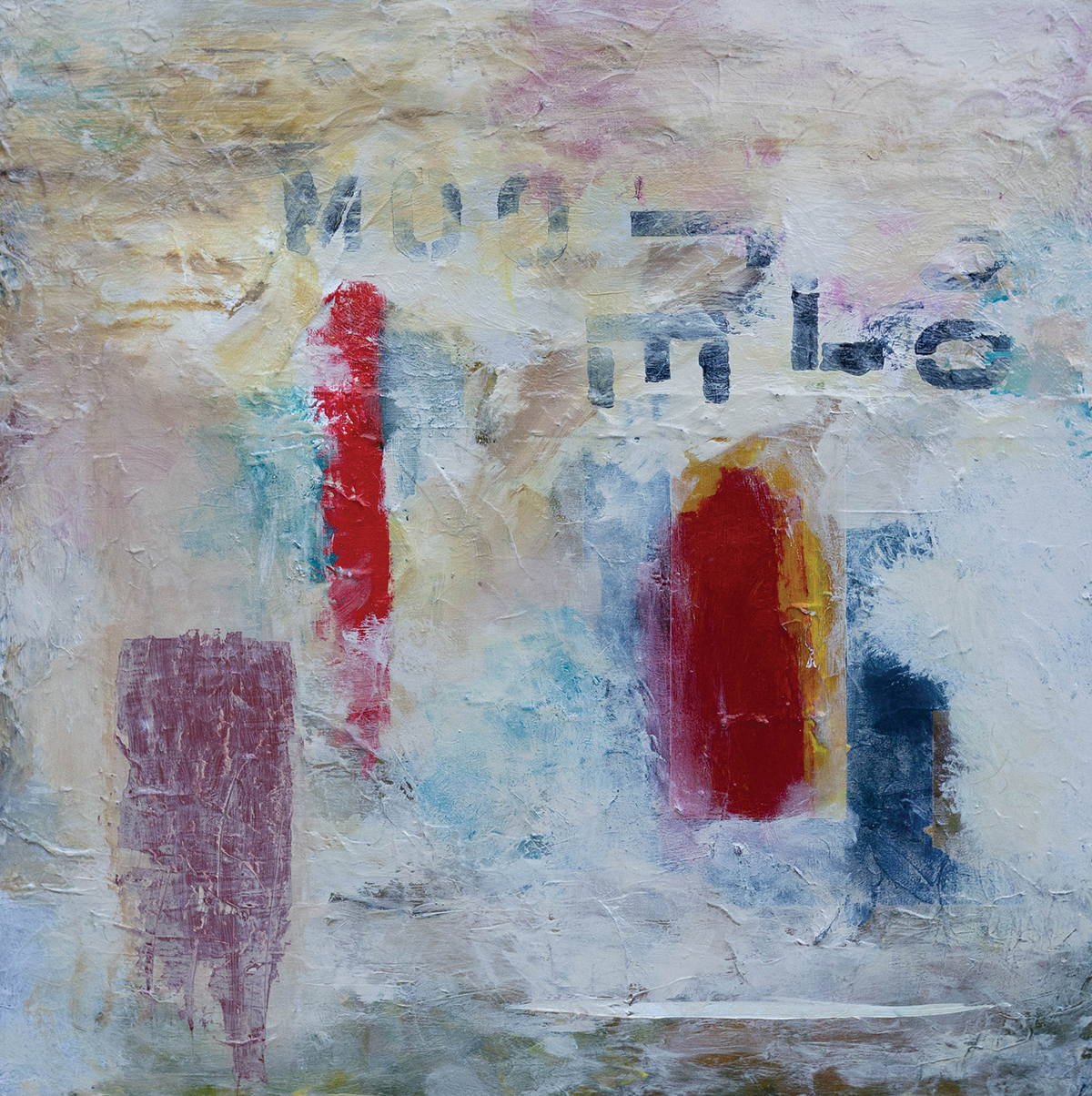
Portrait by Rimas Zailskas
When Hendersonville artist Phil Arrington arrived in town in 2009 from Minnesota, his new home’s lively arts community proved more influential than he’d expected. Until then, his work had centered on assemblage pieces inspired by outsider art and consisting of arrangements of industrial materials and household items; these installations were accompanied by text from Arrington’s own poetry and short fiction. (He’s a graduate of the prestigious Iowa Writers’ Workshop.)
“I used the assemblage work to tell a story,” Arrington says, referring to these early combinations of visual and textual components. “But then I started to spend time with other [Hendersonville] artists and was attracted to their painting.” He began painting himself, combining his text with bright swaths of acrylic.

But before long, he let those words begin to fade. “I began to be fearful of letting words overtake the paint,” Arrington explains. He was afraid, he says, that the text “would prove a distraction,” forcing the viewer to concentrate on just one element of the canvas rather than the work as a whole.
Looking at art, Arrington says, “simply can’t be a one-sided experience. Otherwise, it isn’t art. It’s an ad or a commercial, or whatever.”

Today, Arrington’s modestly sized pieces approach pure abstraction, nodding to his attraction to the work of Paul Klee and Cy Twombly, among other modernists, although the occasional addition of a small piece of rusted metal or a found object recall Arrington’s roots in assemblage and collage. The paintings reside on the cradled birch panels that Arrington has long favored. “I could say they somehow seem more organic, like stone walls were to cave painters,” he points out. “I find the wood to be less fragile, and I can scrape and push and pound on it when I think I’m showing it who’s boss.”

Arrington is still devoted to his writing, even if he now separates it from his visual art. “It’s perplexing,” he says. “When I’m writing, I want to be painting, and when I’m painting, I want to be writing.” Writing’s governing rules provide a more concrete framework, but for Arrington — a self-taught painter who’s never taken an art class — painting offers more room to play and experiment, drawing on instincts and emotions that can be too elusive to pin down in words. The deep blues and muted earth tones of his work evoke a meditative stillness, a pause for thought and contemplation.

The 75-year-old artist took solace in his painting during the pandemic’s travel restrictions and gallery closures, while his studio filled up with new work over the past two years. “COVID knocked everything for a loop,” he notes, adding he intends to search out new gallery representation while continuing to process the uncertainties and anxieties of the times.

“I believe we each carry some sort of internal file cabinet loaded in our subconscious,” Arrington says, “with all the emotional and intellectual stuff that makes us who we are as artists.”
Phil Arrington, Hendersonville. Email: pv.arrington@gmail.com.